drones
Ross Douthat posits that President Obama’s nominations of former Sen. Chuck Hagel as Secretary of Defense and John Brennan as Director of the Central Intelligence Agency represent the synthesis of two strains in former President George Bush’s foreign policy. Hagel as one of those who turned against the war in Iraq, and Brennan as one of those who defended controversial counterterrorism policies.
“To the extent that it’s possible to define an “Obama Doctrine,” then, it’s basically the Hagel-Brennan two-step. Fewer boots on the ground, but lots of drones in the air. Assassination, yes; nation-building, no. An imperial presidency with a less-imperial global footprint.
“This is a popular combination in a country that’s tired of war but still remembers 9/11 vividly. Indeed, Obama’s foreign policy has been an immense political success: he’s co-opted foreign policy realists, neutralized antiwar Democrats and isolated Republican hawks.”

Since the start of the year, drone attacks in Pakistan have been escalating. In the first ten days of January, seven attacks have been reported.
Thursday morning, according to the Global News/AP:
“U.S. drone-fired missiles hit a house in Pakistan's northwest tribal region Thursday, killing five suspected militants, Pakistani intelligence officials said. It was the seventh such attack in less than two weeks.
“The recent spate of strikes has been one of the most intense in the past two years, a period in which political tensions between the U.S. and Pakistan led to a reduced number of attacks compared to 2010, when they were at their most frequent.”
Tuesday, The Bureau of Investigative Journalism reported:
“In twin strikes CIA drones killed at least six people, including up to two reported civilians. There were conflicting accounts of the events that night. Some sources reported there was a single strike that killed up to nine people. However multiple sources reported up to 17 missiles were fired on two close but separate targets at least 15 minutes apart. The first of the potentially coordinated attacks killed at least four in Haider Khel village shortly after midnight. …
“The Agency’s drones killed at least two people in the second strike in nearby Hesso Khel village. As many as 11 missiles were fired on a ‘two room house‘ belonging to Noor Mohammed – his fate was not reported. Villagers said there was no way to tell the identity or nationality of the ‘mutilated bodies’. Many drones were reportedly seen overhead after the strike making tribesmen panic.”
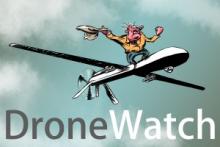
The United Nations wants to use drones in peacekeeping missions, but some developing countries are opposed, fearing that it will become a new way for Western countries to gather and control intelligence. According to the Washington Post:
“The United Nations, looking to modernize its peacekeeping operations, is planning for the first time to deploy a fleet of its own surveillance drones in missions in Central and West Africa. The U.N. Department of Peacekeeping has notified Congo, Rwanda and Uganda that it intends to deploy a unit of at least three unarmed surveillance drones in the eastern region of Congo.”
As the tension between China and Japan over disputed islands increases, both are in a “drone race.” The Guardian reports:
“Drones have taken centre stage in an escalating arms race between China and Japan as they struggle to assert their dominance over disputed islands in the East China Sea. China is rapidly expanding its nascent drone programme, while Japan has begun preparations to purchase an advanced model from the US. Both sides claim the drones will be used for surveillance, but experts warn the possibility of future drone skirmishes in the region's airspace is "very high".
USA TODAY notes a “global arms race” in acquiring drones:
“The success of U.S. drones in Iraq and Afghanistan has triggered a global arms race, raising concerns the remotely piloted aircraft could fall into unfriendly hands, military experts say. The number of countries that have acquired or developed drones expanded to more than 75, up from about 40 in 2005, according to the Government Accountability Office (GAO), the investigative arm of Congress.”
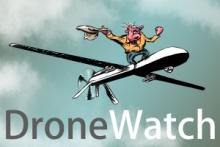
Michael Boyle, an assistant professor at La Salle University, who served on President Obama’s counter-terrorism advisory group during the 2008 campaign, has written a new, critical article on drones for the journal International Affairs.
The Guardian reports:
“The United States' use of drones is counter-productive, less effective than the White House claims, and is 'encouraging a new arms race that will empower current and future rivals and lay the foundations for an international system that is increasingly violent,' according to a study by one of President Obama's former security advisers.
“Michael Boyle, who was on Obama's counter-terrorism group in the run-up to his election in 2008, said the US administration's growing reliance on drone technology was having 'adverse strategic effects that have not been properly weighed against the tactical gains associated with killing terrorists.'"

The secrecy of the U.S. drone program often makes it difficult to follow what is happening. News reports cite unnamed intelligence or security officials, sometimes tribal sources, usually with different information.
For example, on Sunday a large number of people were killed by drone strikes in Pakistan's South Waziristan region. The story was reported by Al Jazeera, Reuters, DAWN, Associated Press, and CNN; among others.
The strike involved “several missiles” (AP), “eight to 10 missiles” (Al Jazeera), or “four unmanned drones fired ten missiles” (DAWN). It was aimed at “a suspected Taliban compound” (Al Jazeera), “three Taliban compounds” (Reuters), “three militant hideouts” (AP), or “three houses” (DAWN). The casualties were “sixteen killed and several others wounded” (Al Jazeera), “seventeen dead, three wounded” (CNN), “between ten and twelve dead” (Reuters), “seventeen dead” (DAWN), or “nine dead” (AP). They were “believed to be militants” (CNN), “suspected to be Taliban fighters” (Reuters), or “fighters belonging to the Punjabi Taliban” (Al Jazeera),
So, how many people were killed? Who were they? You decide.
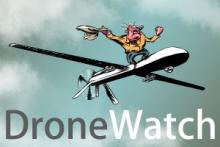
The Bureau of Investigative Journalism has a comprehensive year-end report on U.S. drone strikes in 2012, month-by-month and country-by-country.
“Drone strikes in Pakistan are now at their lowest level in five years, as Islamabad protests almost every attack. The CIA also appears to have abandoned ‘signature strikes’ on suspected militants fitting certain patterns of behaviour – at least for the present. Almost all attacks in recent months have been against named al Qaeda and other militant leaders.
“As drone strikes fell in Pakistan they rose steeply in Yemen, as US forces aided a major military campaign to oust al Qaeda and other Islamists from southern cities. A parallel CIA targeted killing programme killed numerous alleged militants, many of them named individuals. Yet US officials took more than three months to confirm that American planes or drones had killed 12 civilians.”
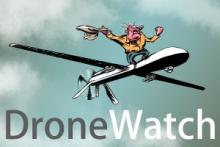
Drone strikes are being escalated in Yemen with the fifth attack in the past ten days occurring on Thursday. Reuters reports:
“At least three suspected al Qaeda militants including a local commander were killed on Thursday in Yemen by a strike from an unmanned aircraft, residents and a local official said.”
Today, in response, Yemeni tribesmen organized a protest in front of a government administration building. According to Reuters:
“Dozens of armed tribesmen took to the streets in southern Yemen on Friday to protest against drone strikes that they say have killed innocent civilians and increased anger against the United States. …
“One tribesman participating in a sit-in in front of the government administration building in Redaa told Reuters by telephone that at least seven innocent civilians were killed in the recent raids.”
Unlike Pakistan, the Yemeni government openly supports the U.S. strikes.

Over the last two days, multiple drone strikes in Pakistan killed at least 13 people. According to the Associated Press,
“Two U.S. drone strikes on northwest Pakistan killed a senior Taliban commander who fought American forces in Afghanistan but had a truce with the Pakistani military, intelligence officials said Thursday.
“The commander, Maulvi Nazir, was among nine people killed in a missile strike on a house in the village of Angoor Adda in the South Waziristan tribal region near the border with Afghanistan late Wednesday night, five Pakistani security officials said on condition of anonymity because they were not authorized to talk to the media. …
“Fighters under Nazir's command focused their attacks on American forces in neighboring Afghanistan, earning him the enmity of the U.S. But many in Pakistan's military viewed Nazir and militant chiefs like him as "good Taliban," meaning they focus attacks only on foreign forces in Afghanistan, keeping domestic peace by not attacking Pakistani targets.”
In a separate drone strike, at least four people were killed early Thursday morning near Mir Ali in the North Waziristan tribal region.

The Syracuse Post-Standard reports that 13 people were found guilty of trespassing yesterday in DeWitt, N.Y,. for a protest in June at the gates of Hancock Air Base. Five who had been previously arrested were sentenced to two weeks in jail, the rest given a conditional discharge and community service requirement.
“The protesters were charged after they spent more than two hours on June 28 at Hancock Air Base’s main entrance while attempting — and failing — to deliver a “citizens’ indictment” for what they are calling reaper drone war crimes committed at the base. They were convicted by Judge Robert Jokl in DeWitt Town Court. The 13 defended themselves without using attorneys.”

Joshua Hersh reports on Huffington Post that the House Judiciary Committee held a hearing yesterday on the use of drones in targeted killings. There was bipartisan unhappiness over the lack of transparency from the administration, yet the committee voted down a bill that would have required more information.
“The House Judiciary Committee hearing was held on Thursday to discuss a resolution put forward by Rep. Dennis Kucinich (D-Ohio) that would order the White House to turn over to Congress all documents related to the government's targeted killing program.
“The measure was dismissed as overly broad and aggressive, but legislators took the opportunity to vent their frustrations about the limited amount of information the administration has shared with the public and Congress about the use of drones.”
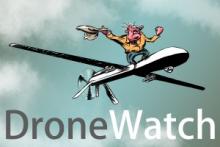
University of Notre Dame Law School Professor Mary Ellen O’Connell writes in Peace Policy of the “high-tech killing” made possible by drones, and the apparent violations of international law this creates.
“The arguments for drones continue to mutate as the technology advances to ever more powerful killing machines: Predators, Reapers, and now the Avenger. Secretary of Defense Leon Panetta announced on November 20, 2012, that the Pentagon plans to expand the use of drone attacks in Libya, Mali, and Nigeria. He said that al Qaeda has “metastasized to other parts of the global body.’’ Now the policy of targeted killing with drones is spreading to other parts of the globe.”

Qanta Ahmed, Templeton-Cambridge Journalism Fellow in Science and Religion and Associate Professor of Medicine, State University of New York, writes in Haaretz about a recent trip to Pakistan’s North West Frontier Province. She finds that hatred of the US and strengthening of the Taliban are directly linked to continuing drone attacks.
“While the drive to codify U.S. drone policy is finally gaining momentum, it may be a case of too little, too late. As long as drones remain airborne, neo-orthodox Islamist terrorists and non-violent - but extremist - anti-American ideologues gain political capital, hoarding it as fast as America loses it. As long as we allow our administration to deploy drones without accountability, Pakistani anti-Americanism is validated, the Taliban is actually strengthened, while we as Americans remain confined in an ugly reality - defined not by who we are, but by whom, how and how often, we kill.”
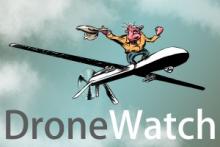
While most news of drones is their use abroad by the U.S. military and CIA, they are also increasingly used for surveillance in this country. A report in the Washington Times shows that the Department of Homeland Security and its Customs and Border Protection agency are using their drones to assist local law enforcement agencies.
“The practice is raising questions inside and outside government about whether federal officials may be creating an ad-hoc, loan-a-drone program without formal rules for engagement, privacy protection or taxpayer reimbursements. The drones used by CPB can cost between $15 million and $34 million each to buy, and have hourly operational costs as well.
“In addition, DHS recently began distributing $4 million in grants to help local law enforcement buy its own, smaller versions of drones, opening a new market for politically connected drone makers as the wars overseas shrink.
“The double-barreled lending and purchasing have some concerned that federal taxpayers may be subsidizing the militarization of local police forces and creating new threats to average Americans’ privacy.”

Over the past few years, there have been an increasing number of U.S. drones crashing at civilian airports. Craig Whitlock reported in the Washington Post:
“A review of thousands of pages of unclassified Air Force investigation reports, obtained by The Washington Post under public-records requests, shows that drones flying from civilian airports have been plagued by setbacks.
“Among the problems repeatedly cited are pilot error, mechanical failure, software bugs in the “brains” of the aircraft and poor coordination with civilian air-traffic controllers.”
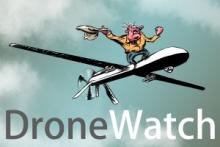
Most drone attacks in Pakistan and Yemen are eventually reported. Not so in Afghanistan. Since they are part of an ongoing war, they don’t make the news. But Stuart Ackerman, writing in Wired, finds that the Air Force reported last week that there have been 447 drone strikes in Afghanistan this year.
“Never before in Afghanistan have there been so many drone strikes. For the past three years, the strikes have never topped 300 annually, even during the height of the surge. Never mind 2014, when U.S. troops are supposed to take a diminished role in the war and focus largely on counterterrorism. Afghanistan’s past year, heavy on insurgent-hunting robots, shows that the war’s future has already been on display.”
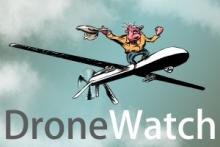
One of the remaining Al Qaeda leaders was killed Thursday in a U.S. drone attack in Pakistan. The Associated Press reports:
“Sheik Khalid bin Abdel Rehman al-Hussainan, who was also known as Abu Zaid al-Kuwaiti, was killed when missiles slammed into a house Thursday near Mir Ali, one of the main towns in the North Waziristan tribal area, the officials said. They spoke on condition of anonymity because they were not authorized to talk to the media.”
The report added that his wife and daughter were also injured, and his wife died Friday.
Reuters reports another senior leader killed on Sunday when a drone fired missiles at a house with Mohammad Ahmed Almansoor inside, in the main town in North Waziristan, near the Afghan border. Three other suspected militants were killed in the attack.
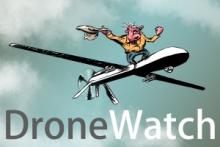
The New York Times reports that before the election, the Obama administration was working to develop rules and procedures for killing by drone strikes. The impetus for the project was a concern that if Mitt Romney were to win the presidency, there was nothing in place to guide a new administration. Resolving internal disagreements also appears to be a goal, as The Times notes:
“Though publicly the administration presents a united front on the use of drones, behind the scenes there is longstanding tension. The Defense Department and the C.I.A. continue to press for greater latitude to carry out strikes; Justice Department and State Department officials, and the president’s counterterrorism adviser, John O. Brennan, have argued for restraint, officials involved in the discussions say.”
The Guardian adds that there already are rules – known as international law.
“Human-rights groups and peace groups opposed to the CIA-operated targeted-killing programme, which remains officially classified, said the administration had already rejected international law in pursuing its drone operations.
"To say they are rewriting the rulebook implies that there isn't already a rulebook" said Jameel Jaffer, the director of the American Civil Liberties Union's Center for Democracy. "But what they are already doing is rejecting a rulebook – of international law – that has been in place since [the second world war]."
Also this weekend, the Washington Post reported that drones are also playing a role in the selection of a new CIA Director to replace David Petraeus.
“As Obama approaches a second term with an unexpected opening for CIA director, agency officials are watching to see whether the president’s pick signals even a modest adjustment in the main counterterrorism program he kept: the use of armed drones to kill suspected extremists. … The list of possible replacements is led by three CIA veterans who have all contributed to the agency’s pronounced shift toward paramilitary operations. Obama’s choice could determine whether the trajectory continues or begins to taper off.”
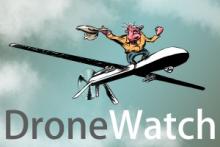
An Awake to Drones blog has been started by Protest Chaplains of Chicago to begin a conversation about the use of drones for warfare and surveillance. They hope that such a conversation “will guide and lead us to take actions to stop this warring madness, to ground the drones.”
“We invite you to wake up and join us in theological conversation or dialogue about the use of drones for warfare and surveillance. A few of us here in the Chicago area from a variety of faith and spiritual backgrounds have begun to wake up and talk about the horror of it all. We are beginning to question our country’s use of drones instead of due process, our President’s Kill List, the naming of all men above 18 years of ages as “enemy combatants.” It’s made some of us go back and study Just War theory again, dig deep into our sacred texts, examine our consciences. It’s brought us together and made us want to reach out to you.”
Protest Chaplains are “imams, ministers, pastors, priests, rabbis, friars, sisters, monks, as well as non-ordained, from all traditions, or none, supporting Occupy Chicago as chaplains/spiritual presence.”
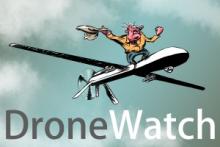
Brian Terrell, co-founder of Voices for Creative Nonviolence, will begin a six-month prison sentence the end of November after being arrested for trespassing while protesting drones at Whiteman Air Force Base in Missouri. The Columbia Missouri Daily Tribune reports that he is using his remaining time to educate about the use of drones.
Last week Terrell spoke to students at the University of Missouri:
“Terrell told students the program at face value seems like a "no-brainer" because it keeps American troops out of harm's way. But he also challenged them to consider how the United States would respond if other countries were firing missiles into America from a video game console overseas. "If someone else was doing this to us, we would try to bring them to justice," he said.”
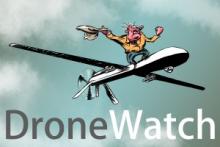
Noah Shachtman points out in Wired’s Danger Room that since 9/11, U.S. intelligence agencies have had counter-terrorism as their primary focus, including hundreds of drone strikes. Then he notes two former heads of the CIA who are urging a return to intelligence-gathering.
“We have been tremendously focused on counterterrorism for the last 11 years [since 9/11]. How do you now begin to make sure that you cover other necessary things without making the country less safe?” asks former CIA director and retired Gen. Michael Hayden.
“Nearly every major international security concern facing Petraeus’ successors is, in essence, a question of intelligence: What is Iran’s nuclear capability, really? Which way will the Syrian civil war go? Why is China building up its Navy so fast? What the hell is Kim Jong-Un up to? “Those are things that you’re not going to learn through diplomacy or through press reporting. And that takes you to intelligence,” notes John E. McLaughlin, the CIA’s former acting director.”